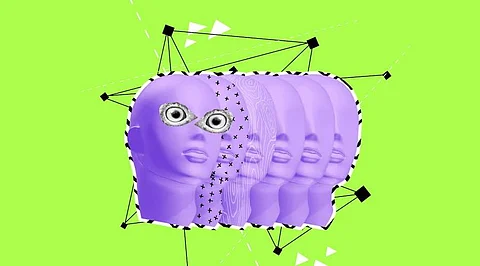
- Insights
- Cryptocurrencies
- Stocks
- White Papers
- Reports
- Industry
- Geography
- Insights
- Cryptocurrencies
- Stocks
- White Papers
- Reports
- Industry
- Geography


NFTs also called non-fungible tokens have grown in popularity in recent years as individuals seek one-of-a-kind digital assets. NFTs have become a big topic in the art, music, and gaming industries, with millions of dollars being spent on these digital assets. As the NFT industry expands, it is critical to grasp the developing trends and technologies that will influence the NFTs creation in the future.
Below are the important technologies and trends in NFTs
1. Blockchain Interoperability
Blockchain interoperability is one of the most important themes in the NFT market. Most NFTs are now formed on the Ethereum blockchain, however, other blockchain networks are emerging as competitors. Developers are developing solutions that will allow for the smooth transfer of assets between multiple blockchains.
Cross-chain bridges, which allow NFTs to be exchanged across multiple blockchain networks, are one such approach. These bridges can assist to alleviate fragmentation in the NFT sector by allowing assets to travel freely between ecosystems.
2. Fractional Ownership
Fractional ownership, which includes dividing an NFT's ownership into several sections, is one new trend in NFT formation. As a result, many investors can each own a little portion of an NFT and benefit from its appreciation. NFTs may become more accessible to a larger variety of investors thanks to fractional ownership, which may also open up new possibilities for group investing.
3. AI-Powered NFTs
Developers are investigating the use of artificial intelligence (AI) to produce distinctive and customized NFTs as the use of NFTs grows. Machine learning algorithms that analyze data and produce original digital assets can be used to develop AI-powered NFTs.
These AI-enabled NFTs can be applied to several tasks, such as producing one-of-a-kind in-game objects or customizing digital art. This trend has the potential to give rise to an entirely new class of NFTs with limitless modification and customization options.
4. Integration with Physical Assets
Although digital goods like music and artwork have traditionally been represented using NFTs, there is rising interest in using NFTs to represent physical items as well. This practice of establishing digital representations of physical goods on the blockchain is referred to as "tokenization."
Tokenization can completely change how we acquire and trade tangible goods like real estate or collectibles. the development of an NFT that represents a physical asset and allows for blockchain trading, increasing liquidity and opening up new investment options.
5. Improved Scalability
Scalability has turned into a major issue as the demand for NFTs keeps rising. Due to the tremendous demand for NFTs, the Ethereum network, which is currently the most popular blockchain for NFT creation, has encountered substantial congestion and high fees. Developers are looking into potential remedies for this problem, namely layer-2 scalability, which includes offloading transactions from the primary blockchain to auxiliary networks.
The adoption of other consensus techniques, such as proof-of-stake, which can increase the scalability of the blockchain network, is another option being investigated. NFT producers can produce and sell more NFTs by increasing scalability without having to worry about transaction costs or network congestion.
6. Social NFTs
A brand-new class of NFTs called social NFTs depicts social ties or interactions. Social NFTs can, for instance, symbolize a virtual handshake between two people or a gift given between friends. These NFTs can be utilized to represent social capital and provide brand-new platforms for online communication and self-expression.
7. Gaming and Metaverse Integration
NFTs can be used in the gaming sector to symbolize in-game goods or commodities that can be purchased, sold, or traded on the blockchain. This presents new investment opportunities for gamers as well as a new revenue stream for game producers who can profit from the sales of these assets. The uncommon or expensive in-game items that players can invest in may increase in value over time and may be sold for a profit.
In the immersive virtual environment known as the metaverse, people can communicate with each other and with digital objects. In the metaverse, NFTs can be used to represent virtual real estate, buildings, and other assets that can be purchased and traded on the blockchain.
8. Environmental Sustainability
Concern concerning the effects of NFT production on the environment has increased along with NFT's popularity. An important area of criticism has been the amount of energy consumed to build and operate the blockchain networks needed to construct NFTs. Some developers are looking at more environmentally friendly solutions to this problem, like developing carbon-neutral NFT marketplaces or employing proof-of-stake consensus procedures. With the development of NFT technology, environmental sustainability is likely to become a factor that is taken into increasingly greater attention.
Disclaimer: Analytics Insight does not provide financial advice or guidance. Also note that the cryptocurrencies mentioned/listed on the website could potentially be scams, i.e. designed to induce you to invest financial resources that may be lost forever and not be recoverable once investments are made. You are responsible for conducting your own research (DYOR) before making any investments. Read more here.
